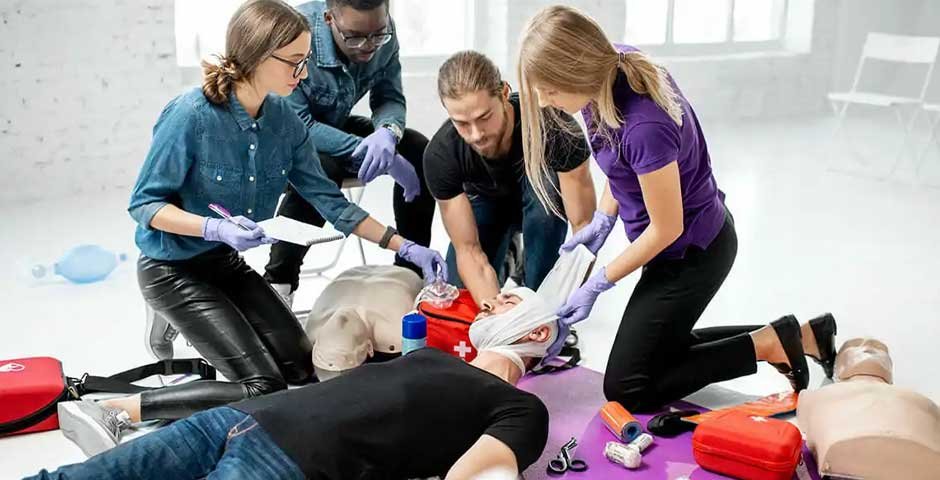Although standard first aid and CPR may have a few differences, they have a common goal which is to save lives. While first aid is a broad practice that encompasses various medical applications, including CPR, CPR is specific.
For instance, in first aid training, you’ll learn how to examine a victim, use a defibrillator, control bleeding, and familiarize yourself with basic life support skills. Meanwhile, in CPR training like the one done at Take Action CPR, you’ll only learn to perform a variety of CPR procedures like one-person CPR, hands-only CPR, and others. Knowledge of what differs in both is important as it will help you administer the proper treatment when needed.
What Are the Major Differences between First Aid and CPR?
First Aid is Broad, CPR is Exclusive
As earlier stated, one major difference between first aid and CPR is that first aid is broad, while CPR is exclusive. First aid is immediate help given to a victim before medical emergency services arrive. It can take several forms depending on the specific kind of treatment needed by the victim.
On the other hand, CPR (Cardiopulmonary resuscitation) is specifically administered to victims of sudden cardiac arrest, which is a deadly condition that can lead to heart failure. Shortly put, CPR is a form of first aid that only applies to specific victims.
First Aid and CPR Have Varying Objectives
The first aid administration depends on the state of the casualty and the cause of the harm. It may be similar to CPR in the purpose of saving lives, but their critical objectives differ. CPR specifically aims to provide an artificial heartbeat that can help normalize the patients’ blood circulation. It is used to prevent vital parts of the body from losing life.
First Aid Takes Different Forms; CPR is Procedural
First aid usually takes different forms. For instance, there are various methods of treating burns and bruises based on their cause. It is applied to relieve pain and suffering and to avoid any loss of life.
However, CPR makes use of specific procedures that trained persons can only apply. The steps are the same globally and are effective when properly done. It must be done as stated in the training procedures to avoid loss of life. For instance, any victim suffering from cardiac arrest can only be revived using the AED (Automated External Defibrillator) Machine. This machine is exclusive only to cardiac arrest victims and can be used only by trained persons. Also, the quality of CPR will greatly determine the victim’s chances of survival which means it should be done precisely to avoid further damage.
Not All First Aid Cases Are Severe
Generally, cases that need first aid vary; some may not be as severe as others. For example, an accident victim in a coma is more severe than an accident victim lightly bruised; however, both require first aid treatment. Also, some cases that require first aid treatment may not need further medical attention from a medical professional.
On the contrary, CPR treatments are always for severe cases. This is because a person suffering from cardiac arrest is termed legally dead, and chances of survival are dependent on the immediate application of CPR. The timing is crucial in the CPR procedure. The faster it is delivered, the more likelihood of the victim surviving. As such, whether or not the person is restored, they would need to go to a professional medical provider for a proper check.
Is there any difference between the training in First Aid and CPR?
Both may be taught together in a single course or separately. However, First aid courses take longer durations of learning and practice compared to the CPR course. The major difference in the courses is the course curriculum or content.
First aid training teaches how to respond to broad forms of injuries and illnesses, including topics of CPR. Moreover, CPR training only focuses on how to perform resuscitation procedures, chest compressions, and recognition of instances where CPR should be applied.
The importance of knowing the difference between first aid and CPR treatments, whether as an individual or medical personnel, should not be taken for granted. This is because medical emergencies can happen at any time and anywhere, and your knowledge of both can help save the moment.
Thankfully several reputable organizations offer professional training for learning both theoretical and practical aspects of these treatment techniques. Once you enroll, you’ll be able to learn the skill and will also be certified as a trained expert in the field






